Helping with birth complications in sheep and goats
You can help with birth complications in sheep and goats with a little bit of knowledge. You’ll gain experience each time and it will get easier.
You can help with birth complications
Sometimes birth is complicated. In an ideal birth, the lamb or kid presents with a nose and two front feet at the birth canal and it’s just a few pushes before the baby slips safely out. She might hang there for a few seconds with the head dangling, allowing the birth fluids to drain out of the lungs and nose. And then she drops to the ground and opens her lungs with a little bleat, while the mamma turns and starts licking the face to remove the birth sac.
Alternatively, the baby might be born breech, with the back legs and tail first. In this case, the mamma pushes and the baby is delivered without the advantage of the gravity draining the lungs. A breach baby might need to be held head down for a minute to drain the mucus from the nose and lungs. As long as the umbilical cord remains attached until the baby is fully out, there is no problem. The baby has a bit of time before it needs to take that first breath.
However, in a difficult birth, when the head is turned back in the birth canal, or the birth is mal-presented, the lamb doesn’t deliver smoothly. You may need to help. But with a little bit of knowledge, you can help with birth complications in sheep and goats. The more experience you have the easier it is.
Know what normal birth looks like
A normal birth for doe or ewe presents with two front feet and a nose over and between the feet, at the animal’s vulva. Pulling on the two feet brings the nose further out into the birth canal. This is how 95% of all lamb and goat births begin. Llama and cattle births present this way, as well. The hooves will be upright and the nose will show on top of the feet, not underneath. Pulling on the hooves will bring both the hooves and the head further forward.
In a normal birth, the cone shape of the nose and feet stretch the birth canal and pelvis to aid in the smooth delivery of the shoulders, the widest part of the baby.
Goats and Sheep have a uterus with two horns, one on either side of the ewe. In twin births, generally, one baby grows in each horn. In a normal birth, one baby enters the uterus from the horn and progresses toward the birth canal during labour. That baby is delivered front feet and nose-first. The second baby leaves the second horn and enters the birth canal while the first baby is exiting the womb. Since each baby is enclosed in a separate sac there is no mix-up with feet during the birth, in 95% of births. During long, difficult births things can get complicated though.
Birth complications or an abnormal birth
During an abnormal birth, it helps if you can visualize what the lamb or kid looks like inside the uterus. Your hands will have to be your eyes as you assess the situation and determine how to best help. In an abnormal birth, there are several presentations that present problems for the mother and the baby.
- Only 1 front hoof is presented. Or one hoof and a nose. The other hoof is back and will need to be brought forward for the shoulders to deliver.
- Two hooves are present but there is no nose. The head is turned back and will need to be brought forward, over the two hooves before the birth can be completed.
- The side of the baby is against the birth canal preventing any part of the baby from entering the canal and getting in the birth position. You’ll need to reach in and find the front feet and the nose and bring it forward into the correct position for birth.
- Two feet are presented but they are from different animals. One baby will need to be pushed back and the other one brought forward to allow each one to enter the birth canal singly and to allow the birth to progress. In this case, pulling on only one foot and allowing the other to fall back will allow you to distinguish where to find the second foot and the nose. You need to make sure you only pull on one baby at a time.
In all cases, whether you need to turn the baby, or push one back and bring another one forward, you are trying to get two front feet and a nose or two back feet and a rump, with tail into the birth canal to allow safe delivery of the newborn.
Knowing what normal birth looks like can prepare you to use your hands to bring the right part of the newborn into the birth canal to allow for safe delivery of the lamb or kid.

How to help in a malpresented birth
Don’t be in a hurry to help out. In 95% of all lamb and goat births, the mom can get the baby out just fine without help. But if you see a momma straining or screaming and it goes on for more than a few minutes, wash your hand up to the elbow with warm soapy water, and reach in, just to the vaginal opening and assess. You may need to get a helper to hold the ewe or doe still and speak reassuringly to her.
Put just your fingers into the front of the birth canal and feel for two front feet and a nose. If they are there, wait a bit longer before you help. Gently pulling on the two feet, in an out and down motion, should bring the nose further forward. If it doesn’t the head might be too large to move through the vaginal opening. This can happen in a first-timer who has a single large male kid or lamb. The forehead will be the largest part of the singleton baby and the hardest part to deliver. You can gently ease the vaginal tissue around the forehead. It will stretch, provided that you aren’t dealing with a dwarf animal or a mother under two years old. Pull down on the front feet and the head should slip out. Once you have the head delivered, allow the baby to hang down naturally. The lungs will drain and the baby will breathe in before it is delivered. A push or two from the mom will deliver the baby and sever the umbilical cord. All will be well.
However, if you don’t find two front feet and a nose, you’ll need to go in a little deeper to locate the front feet and the head. If you feel one front foot, pulling gently on this should bring the shoulder forward and allow you to find the head and the other foot. If you can find them, bring these forward, ensuring that both feet and head belong to the same baby. In twins or multiple births, extra feet can complicate a difficult birth. Ensure that you have the correct feet for a single baby.
If you have to go inside the ewe or doe to help with a difficult birth, clean your hands including your nails, with hot soapy water. Use a lubricant like soapy water and be very gentle with all your actions inside the mother. Uterine tissue can tear easily with rough handling and cause the death of the mother. Any intervention that involves reaching into the uterus to help a baby should be followed by extra care of the mom that includes 5 days of antibiotics, to prevent uterine infections.
When to call the vet for birth complications
If you live rurally you may not have time to call a livestock vet before the baby or the ewe is compromised so it’s important to learn how to help in a difficult birth yourself. But if you are unsure of yourself or you feel that the birth is beyond your ability to help, by all means, call a trusted livestock vet. A good vet will educate you in helping with difficult births.
I called the vet my very first time helping with the delivery. I didn’t realize that a first-time mom would take a while before the cervix was open enough to pop the baby out. I saw the doe concentrating and staring at the corner for hours, and thought that there was a problem About 12 hours later she delivered a healthy boy, all on her own. With each birth, I gained a little more experience and a little more confidence in handling the natural birth. You will, too.
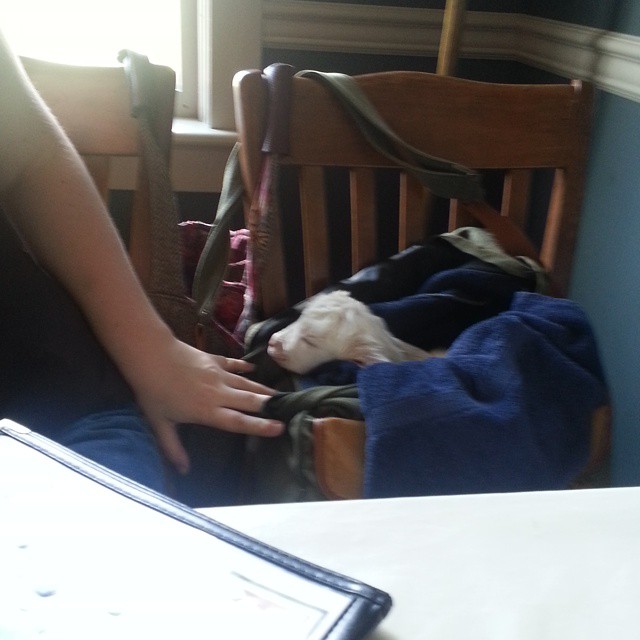
Resuscitating a newborn
In a difficult birth, you may find that the baby seems lifeless and unresponsive don’t give up yet. In a difficult birth that first breath can be elusive, even if the heart is still beating. Here’s how to get the baby breathing.
- Wipe the face to clear the nose and mouth of mucus. Keep some old, clean towels in the barn during lambing/kidding season for this.
- Hang the baby upside down, supporting the hips and legs, allowing the lungs to drain. You should see mucus draining from the nose. Swing the baby from side to side gently, if you see this draining mucus, to clear the lungs quickly. It should take less than 10 or 15 seconds to do this.
- Immediately, cover the lamb’s/kid’s mouth and nose with your mouth and puff gently into the baby’s lungs, being careful not to overfill. It’s the same technique you’d use to do CPR on a human infant. Gentle puffs are all you need.
- Hold the baby upside down again to allow any excess mucus to drain out. Wipe the nose again. Puff air into the baby’s lungs again. After a few puffs, the baby should become responsive and begin to move and breathe on its own.
Supplement with Selenium
A weak lamb or kid may need an immediate shot of selenium to give it a boost. Often a mal-presented birth is an indication that the ewe was selenium deficient during the pregnancy. If the ewe wasn’t supplemented with selenium in the last 8 weeks, it would be a good idea to give the ewe a selenium supplement after a difficult birth, too.
Dip the umbilical stump in iodine and help the weakened baby get its first colostrum. If it is too weak to find the teat you’ll need to supplement with its own dam’s milk until it is strong enough to stand suckle on its own.
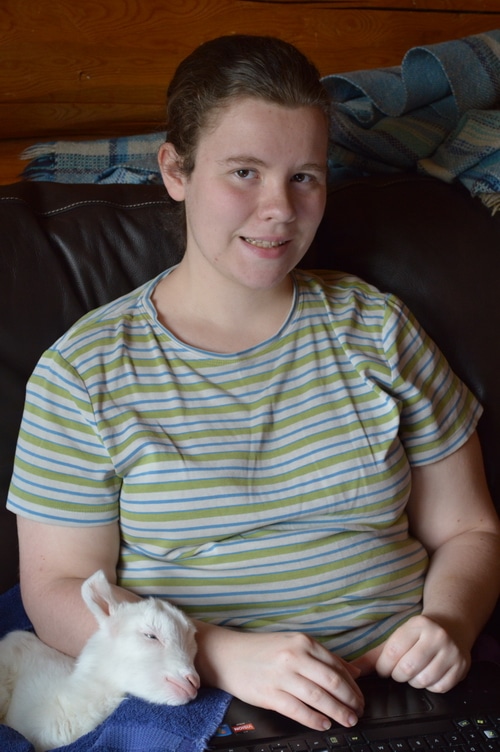
More help for lambing difficulties
Check this post on how to get a lamb on a bottle for supplemental feeding and this one on dealing with Hypothermia in lambs or kids.
Lambing process with illustrations
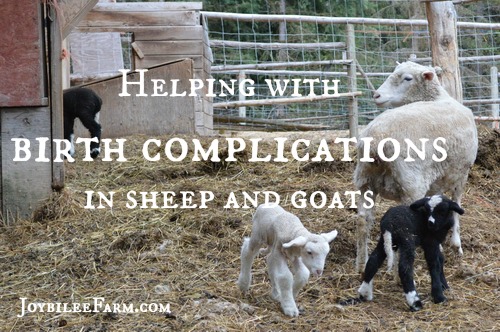
Books to help you with lambing
The Sheep Book
Storey’s Guide to Raising Sheep
Your Sheep: A Kid’s Guide to Raising and Showing (I thought this book was more useful than some of the adult books on sheep raising.)


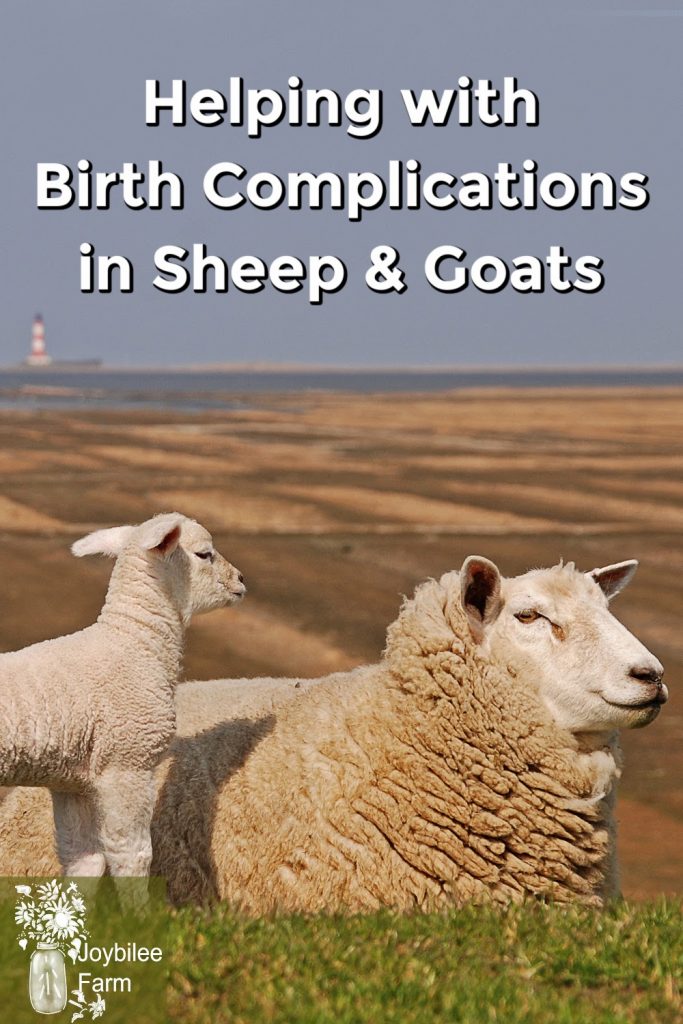
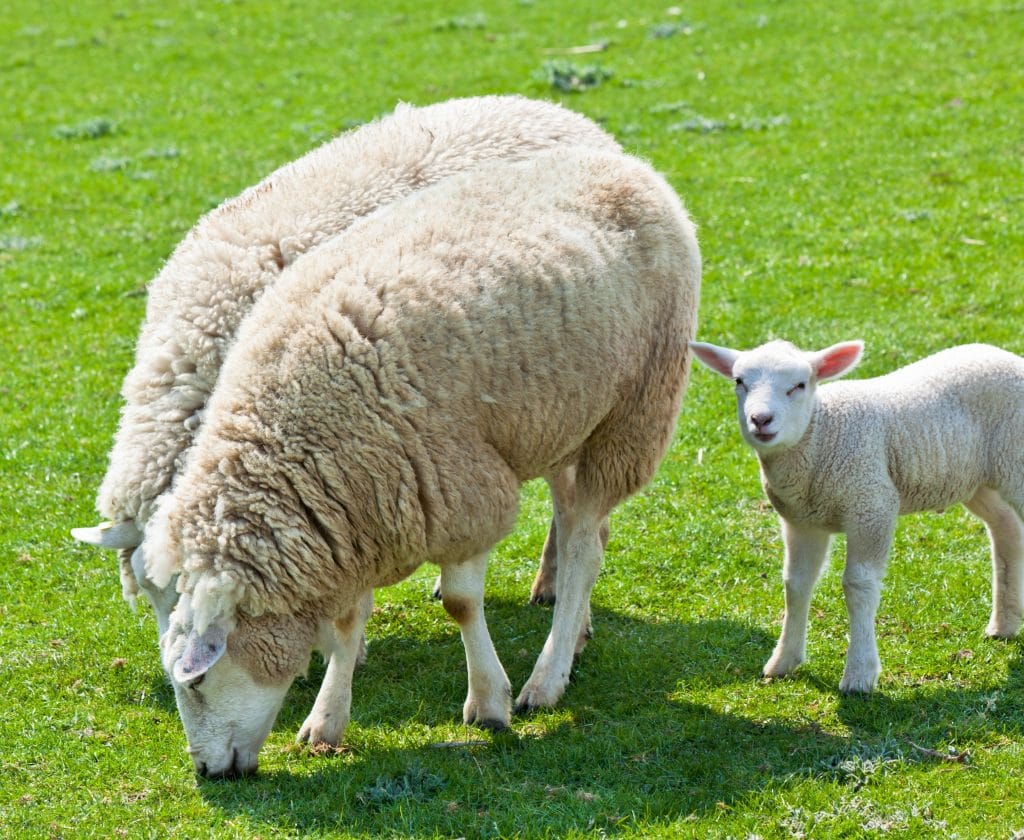

Thanks so much. 🙂
I’ll check to see if the mail program sent you the last newsletter. Sometimes if there is a problem they will suspend service rather than spam your mail box.
This was the last post I received from you and I am not able to rejoin. Kind of disappointed that my e-mail. is not receiving your blog posts…am I doing something wrong?
It’s a hard thing to do all you can humanly do and then have a loss at the end. It humbles you. It makes you realize that God ultimately makes the final decision about life. But it is also a rewarding life. Sorry you had a loss.
I can’t even explain how much I love this post. I went through a traumatic birth with our ewe and her stillborn lambs. The vet stayed on the phone with me giving me the directions you wrote out here. Its an incredible learning experience even if it ended sadly.